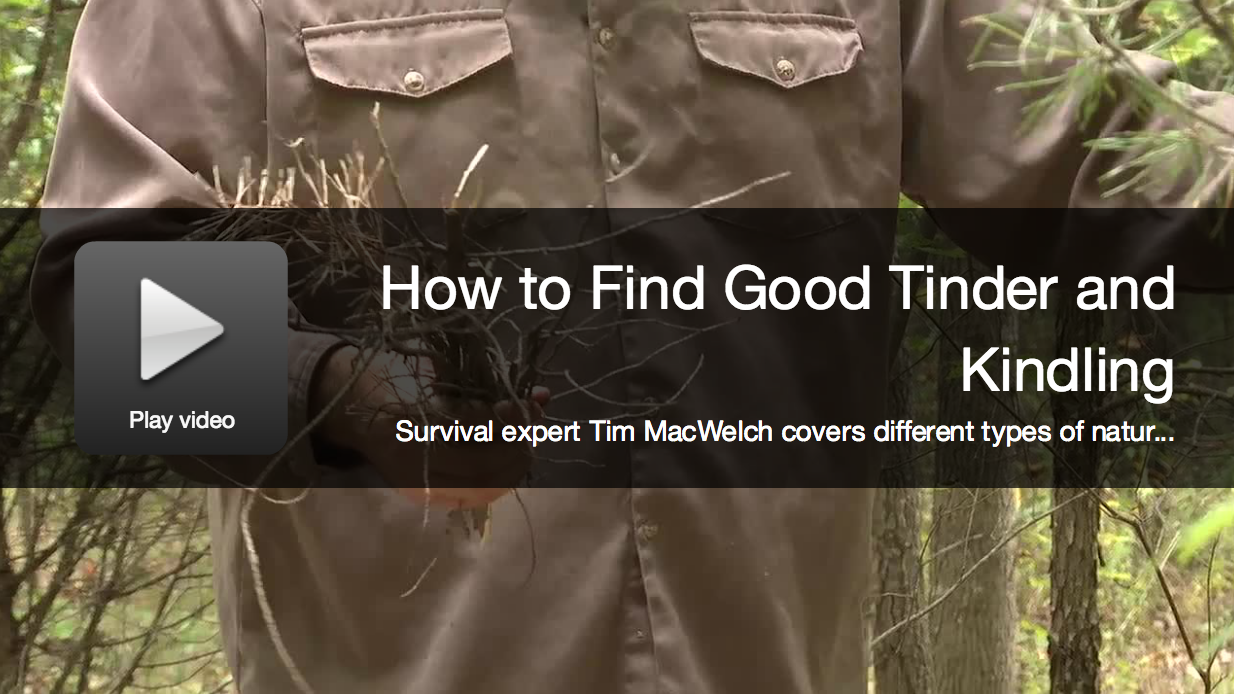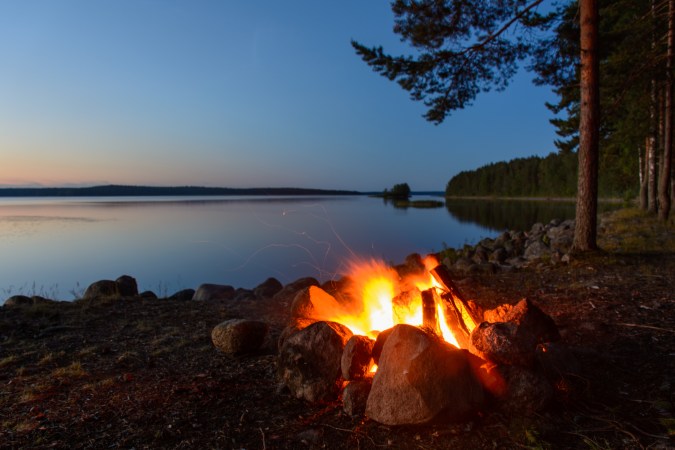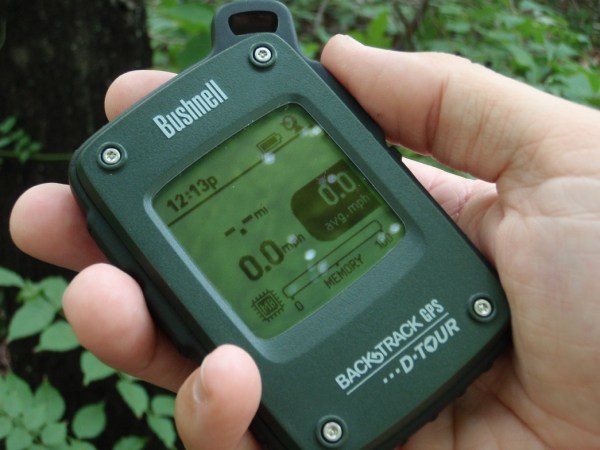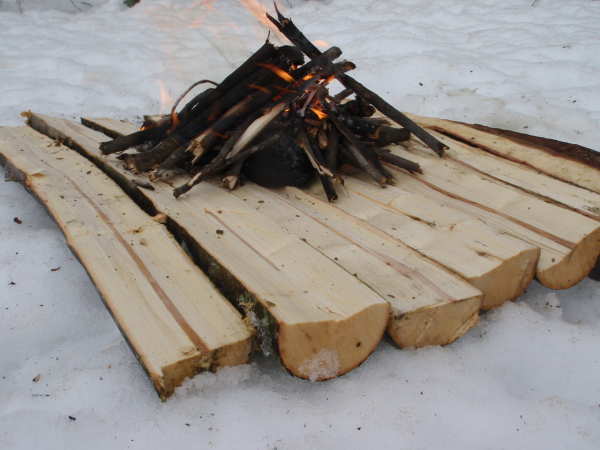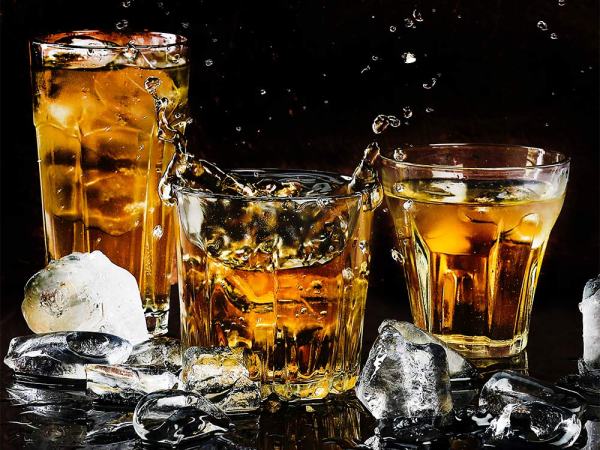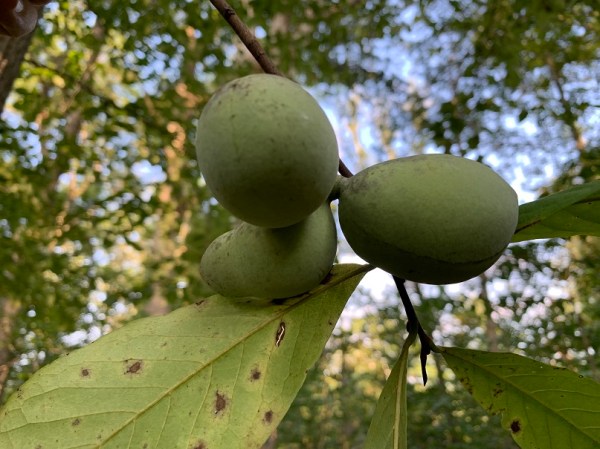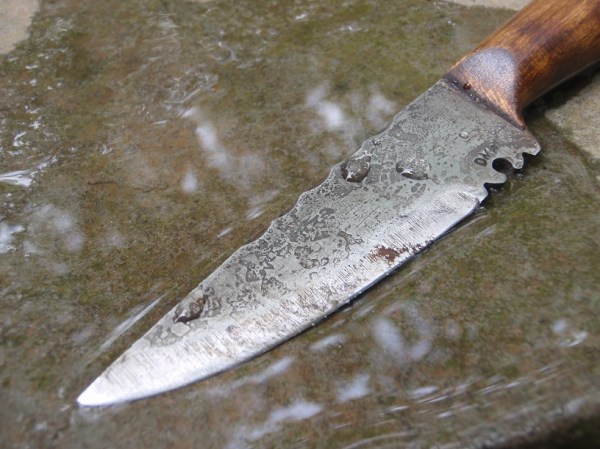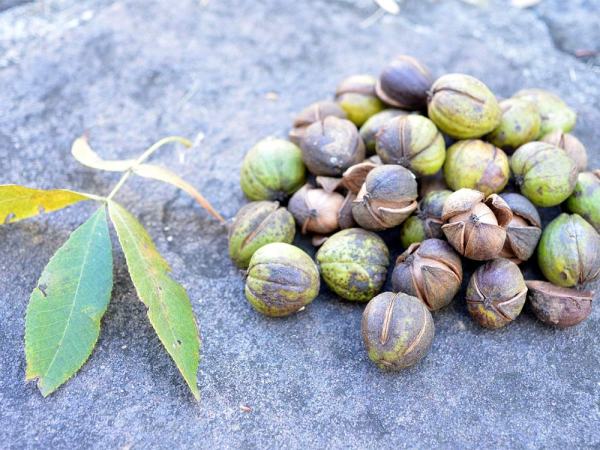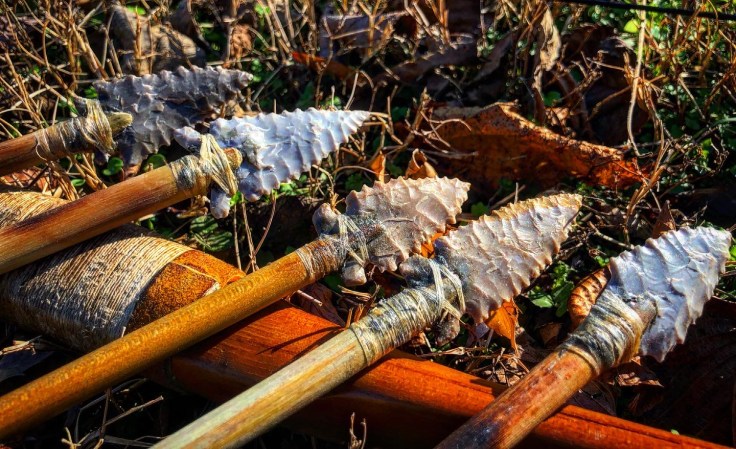Whether you start a fire by rubbing two sticks or with a butane lighter, your infant fire still needs the same “baby food”—good-quality tinder and kindling. Tinder is the dead, dry, fluffy plant material that catches fire first. Kindling is larger material that forms the bridge between tinder and fire wood. Use these tips to find great tinder and kindling in any terrain and any season.
Source Your Tinder
Your first step in fire building is finding tinder, which you’ll use to turn a coal, spark, or small flame into fire. Tinder should be dead, but usually not rotten (there are always exceptions). Rotten plants tend to lose more and more of their fuel value as they decompose. Your tinder should also be as dry as it possibly can be. In rainy weather, this might mean finding a few scraps or even one leaf at a time, and keeping that tinder dry while you search for more.
Finally, seek out tinder that is light, airy, and has a lot of surface area for its mass. In other words, look for “fluffy” stuff. Materials that are not fluffy should be processed in some way to increase their surface area so that they can reach their combustion temperature as quickly as possible. The following are just a few of the many of sources of tinder available in the wild. Use them individually, or blend them together.
—Grass leaves, stalks, and tops
—Mosses and ferns
—Evergreen needles and tree leaves
—Fibrous inner tree bark (my favorite!)
—Weed tops and seed down
—Fine wood shavings
—Coconut and palm fiber
Collect Your Kindling
Kindling is the material that feeds the flames of tinder and gives a fire the heat to burn larger pieces of wood. Kindling can take the form of dead twigs, wood splinters, dead vines, and bark. Like tinder, you kindling should be as dry as possible. Find kindling of different sizes, from that of a piece of wire up to larger twigs and branches that could almost be considered firewood. Always collect plenty of kindling, especially the small wire-like pieces. Finally, pack the kindling pieces together tightly. Most dry-weather fire-making failures happen because the kindly bundle wasn’t packed tightly enough. Dead pine twigs are one of my go-to kindling in good weather and bad, because the pine’s oil and pitch are so flammable.
What are your favorite natural tinder and kindling materials? Tell us about them in the comments.
